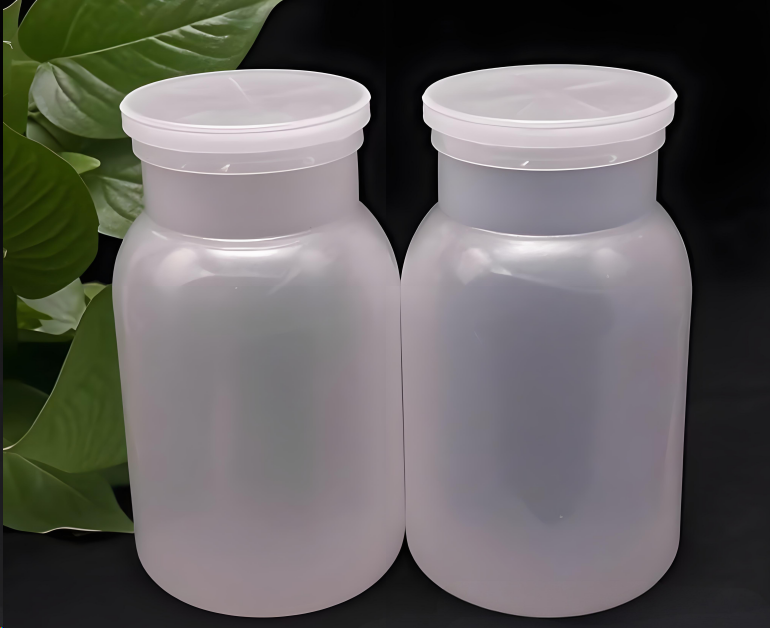
Enoki mushrooms are generally grown in plastic bags or special plastic bottles.
(I) Plastic Bags and Sleeves
Polyethylene plastic bags for normal pressure sterilization, polypropylene plastic bags for high pressure sterilization: Specifications: 17cm x 33cm, thickness: 0.004-0.005cm, must be free of pinholes. Sleeves are typically double-sleeved (Figure 2-44), which provides ventilation, prevents contamination, and is reusable. The neck diameter is 5.0cm.
(II) Seed Bottles
1. Bottles
Bottle cultivation of enoki mushrooms began with the use of glass bottles. In the mid-to-late 1950s, due to the expansion of production, specialized glass bottles for enoki mushroom production began to appear. These typically have a capacity of 350-450ml and a diameter of 3-4cm. It wasn't until 1966 that the development of PP bottles replaced glass bottles, ushering in a significant leap in the development of enoki mushrooms. With the development of factory cultivation of Enoki mushrooms, the capacity of the bottle has increased from 500ml to 1400ml, and the diameter has increased from 52mm to 85mm.
2. Lid
(1) The role of the lid in Enoki mushroom cultivation: prevent condensed water from entering the bottle during the sterilization process, causing the water content of the culture medium to increase and affect the growth of mycelium; filter miscellaneous bacteria; maintain air permeability and promote mycelium growth; prevent the culture medium in the bottle from drying out.
(2) Main types The lids currently produced in factories mainly include "double-layer slow-pass filter lids" and "integrated molded lids". Their specific characteristics are as follows.
1. Double-layer slow-pass filter lid. This is a new type of Enoki mushroom bottle cultivation lid that appeared in the 1990s. There is a space between the two layers of the lid. After the air passes through the filter layer, it is exchanged through the air holes on the edge of the lid. This type of lid is mostly made of sponge and non-woven fabric as breathable materials. Compared with the straight-through lid, the humidity in the space between the upper and lower layers of the lid is relatively high, so the moisture exchange through the filter material is relatively small, and the thermal insulation performance is much better. In addition, there is a layer of plastic cover on the breathable material to protect the breathable material. When sterilizing, condensed water will drip onto the plastic cover, so water will not directly penetrate into the bottle like a straight-through cover.








